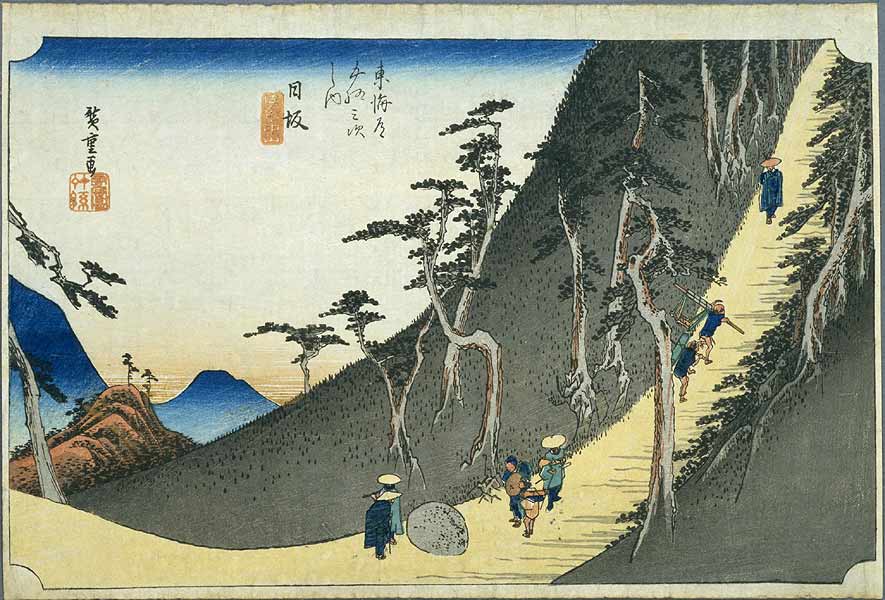The Bitter End
Art of the Edo Period
The Fifty-Three Stations of the Tokaido
25. Nissaka-shuku (Kakegawa)

Nissaka-shuku
Nissaka-shuku was the twenty-fifth of the fifty-three stations of the Tokaido. It is located in what is now part of the city of Kakegawa, Shizuoka Prefecture, Japan.
History
Nissaka-shuku was located at the western entrance to Sayo no Nakayama, regarded as one of the three difficult mountain passes along the Tokaido. At the western entrance of Nissaka-shuku is Kotonomama Hachimangu Shrine.
Originally, various characters were used for Nissaka, as it had been nothing more than a small town located between Kanaya-juku on the banks of the Oi River and Kakegawa-juku, a castle town that was an intersection along an old salt trading route. When Nissaka-shuku was established as part of the Tokaido at the start of the Edo period.
classic ukiyoe print by Ando Hiroshige (Hoeido edition) from 1831-1834 depicts travellers on a steep road in forbidding dark mountains contemplating a large boulder in the road. The stone was a noted landmark on Tokaido called the "Night weeping stone". According to legend, the bandits attacked and murdered a pregnant woman on this spot. After she died, a passing priest heard the stone call out for him to rescue the surviving infant.
The Tokaido Main Line railroad, established during the Meiji period, was built to avoid the difficult pass and, as a result, the fortunes of Nissaka-shuku began to fall. It began to prosper again when Route 1 was rebuilt after World War II, with the new route running through Nissaka.
1955, the village of Nissaka in Ogasa District merged with the neighboring city of Kakegawa.
